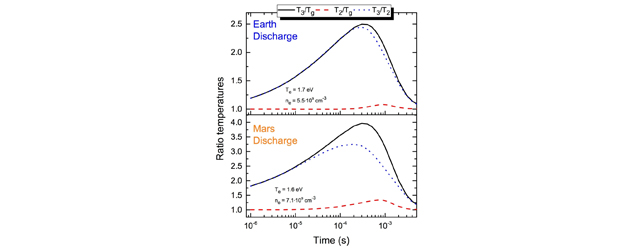Making oxygen on Mars thanks to plasma technology (Vol. 49, No. 1)

Sending a manned mission to Mars is one of the next major steps in space exploration. Creating a breathable environment, however, is a substantial challenge. Plasma technology could hold the key to creating a sustainable oxygen supply on the red planet, by converting carbon dioxide directly from the Martian atmosphere.
Low-temperature plasmas are one of the best media for CO2 decomposition, both by direct electron impact and by transferring electron energy into vibrational excitation. It is shown that Mars has excellent conditions for In-Situ Resource Utilisation (ISRU) by plasma. Indeed, the pressure and temperature ranges in the Martian atmosphere mean non-thermal plasmas can be used to produce oxygen efficiently. Besides the 96% carbon dioxide atmosphere, the cold surrounding atmosphere may induce a stronger vibrational effect than that achievable on Earth.
The method offers a twofold solution for a manned mission to Mars. Not only would it provide a stable, reliable supply of oxygen, but a source of fuel as well, as oxygen and carbon monoxide have been proposed to be used as a propellant mixture in rocket vehicles.
V. Guerra and 8 co-authors, The case for in situ resource utilisation for oxygen production on Mars by non-equilibrium plasmas, Plasma Sources Sci. Technol. 26, 11LT01 (2017)
[Abstract]







